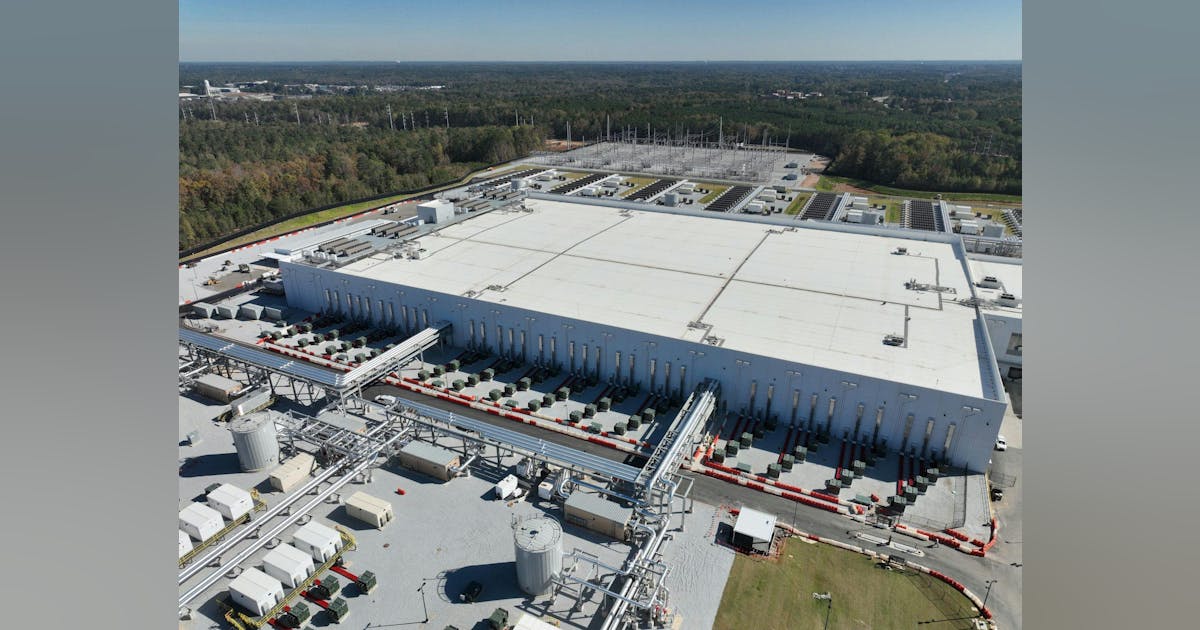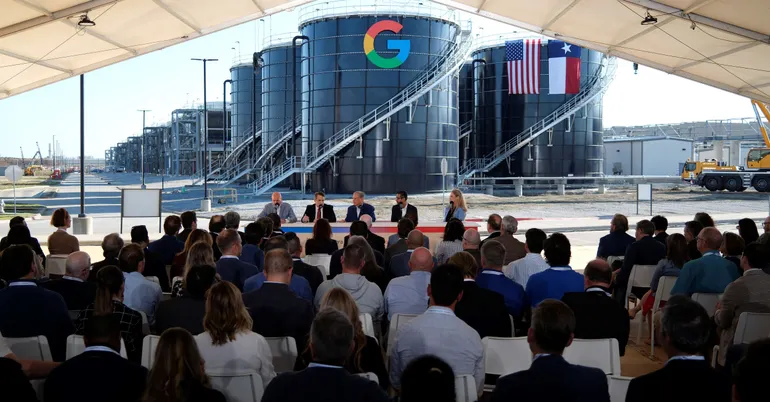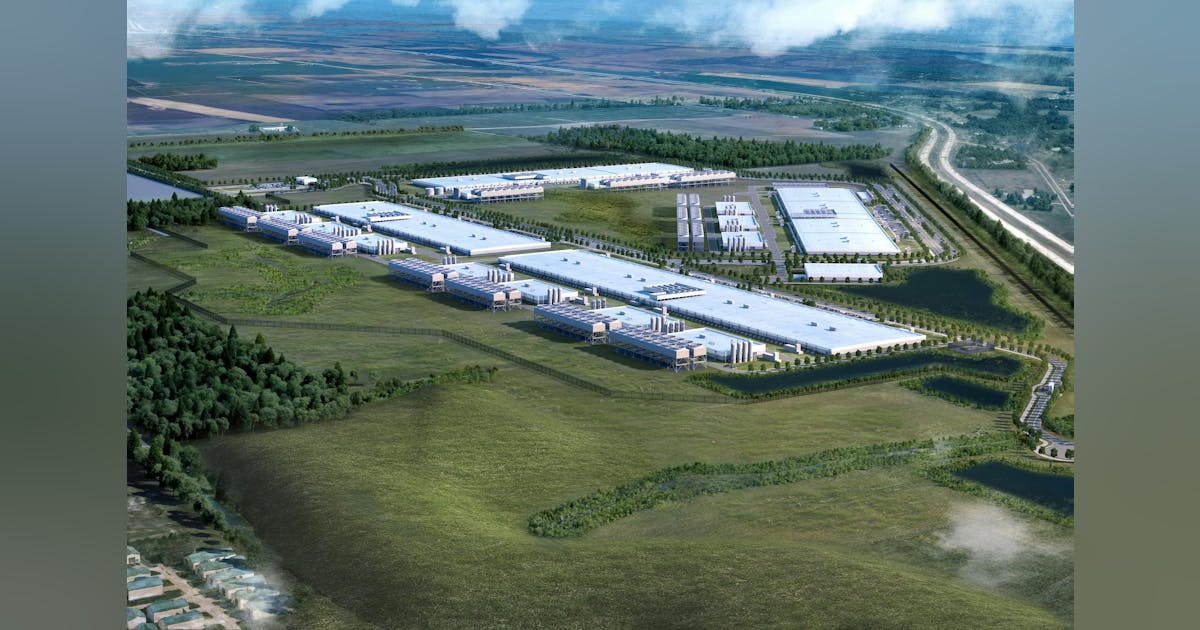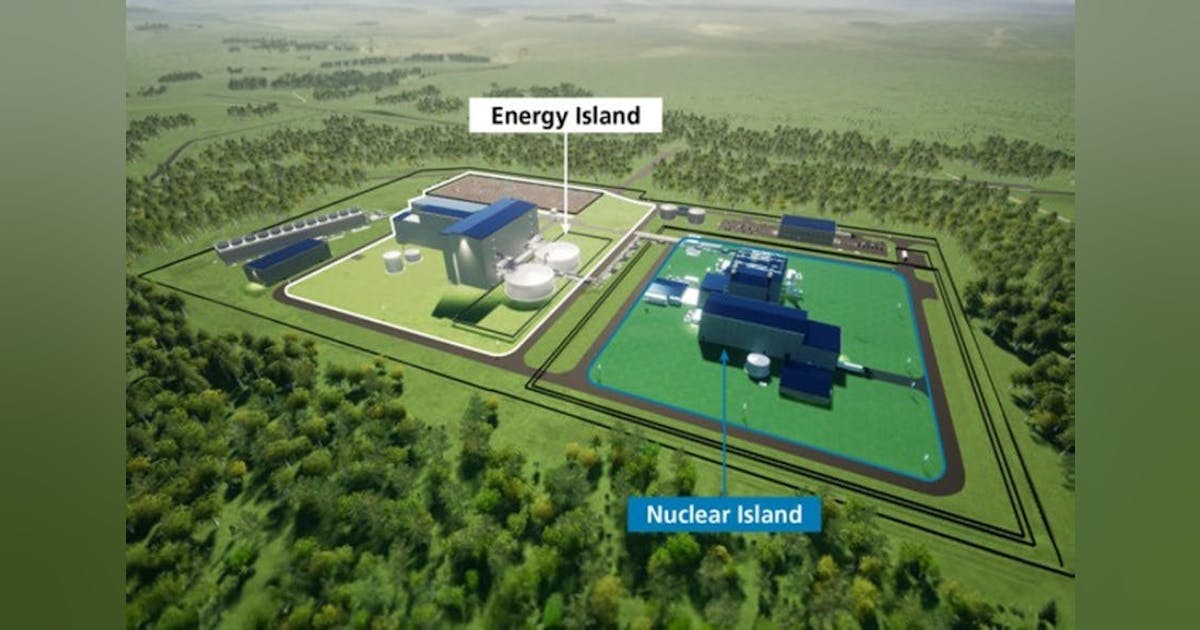
Microsoft’s second Fairwater data center in Atlanta isn’t just “another big GPU shed.” It represents the other half of a deliberate architectural experiment: proving that two massive AI campuses, separated by roughly 700 miles, can operate as one coherent, distributed supercomputer.
The Atlanta installation is the latest expression of Microsoft’s AI-first data center design: purpose-built for training and serving frontier models rather than supporting mixed cloud workloads. It links directly to the original Fairwater campus in Wisconsin, as well as to earlier generations of Azure AI supercomputers, through a dedicated AI WAN backbone that Microsoft describes as the foundation of a “planet-scale AI superfactory.”
Inside a Fairwater Site: Preparing for Multi-Site Distribution
Efficient multi-site training only works if each individual site behaves as a clean, well-structured unit. Microsoft’s intra-site design is deliberately simplified so that cross-site coordination has a predictable abstraction boundary—essential for treating multiple campuses as one distributed AI system.
Each Fairwater installation presents itself as a single, flat, high-regularity cluster:
-
Up to 72 NVIDIA Blackwell GPUs per rack, using GB200 NVL72 rack-scale systems. NVLink provides the ultra-low-latency, high-bandwidth scale-up fabric within the rack, while the Spectrum-X Ethernet stack handles scale-out.
-
Each rack delivers roughly 1.8 TB/s of GPU-to-GPU bandwidth and exposes a multi-terabyte pooled memory space addressable via NVLink—critical for large-model sharding, activation checkpointing, and parallelism strategies.
-
Racks feed into a two-tier Ethernet scale-out network offering 800 Gbps GPU-to-GPU connectivity with very low hop counts, engineered to scale to hundreds of thousands of GPUs without encountering the classic port-count and topology constraints of traditional Clos fabrics.
Microsoft confirms that the fabric relies heavily on:
-
SONiC-based switching and a broad commodity Ethernet ecosystem to avoid vendor lock-in and accelerate architectural iteration.
-
Custom network optimizations, such as packet trimming, packet spray, high-frequency telemetry, and advanced congestion-control mechanisms, to prevent collective operations (all-reduce, all-gather, etc.) from stalling under extreme load.
The result is that, from the software stack’s perspective, each Fairwater site appears as one massive, highly regular graph: a prerequisite for then stitching multiple campuses together into a larger, geographically distributed AI supercomputer.
Building Design as Part of the Infrastructure
Fairwater’s physical layout is engineered as part of the compute fabric. The two-story building design is not simply a real estate choice; it is a latency-control mechanism.
- Racks are arranged in three dimensions to keep cable runs as short and uniform as possible. Even tens of meters of additional fiber introduce measurable delay when collective operations fire millions of times per training step.
- The building footprint is co-designed with the scale-out network, ensuring that GPUs participating in the same training job sit in topologies that minimize both average and worst-case path length.
By the time Microsoft stitches the Atlanta and Wisconsin campuses together over the AI WAN, each site has already minimized “within-site” latency, leaving long-haul WAN delay as the primary variable to manage.
The AI WAN: Core of the Distributed Architecture
Microsoft’s AI WAN is a dedicated, high-capacity optical backbone linking Fairwater sites and earlier Azure AI supercomputers into a unified fabric. It is engineered specifically for AI workloads rather than shared with general cloud traffic.
Microsoft reports deploying ~120,000 new fiber miles in the U.S. over the past year, expanding its AI networking footprint by more than 25%. Much of this new capacity is explicitly provisioned as a dedicated AI backbone.
Key design elements include:
- Dedicated lanes for AI traffic: Microsoft compares the AI WAN to a “carpool lane” for large AI jobs, with high-bandwidth, low-jitter flows are isolated from traditional cloud traffic.
- Optimized routing and protocol stack: The backbone minimizes optical/electrical conversions and hop counts between collaborating sites, prioritizing deterministic latency over best-effort throughput.
- Near speed-of-light long-haul paths: Fiber routes are engineered to be as straight as feasible, reducing route inflation—critical when physical separation already imposes a ~700-mile latency floor.
The AI WAN is therefore not “more bandwidth.” It is a distinct service class within Microsoft’s global network, with its own engineering assumptions and performance guarantees.
A Three-Layer Network Model
To support distributed AI workloads at scale, the Fairwater architecture deliberately separates networking into three functional layers:
- Scale-up (intra-rack, NVLink):
Ultra-low latency, ultra-high bandwidth communication for tensor/model parallelism and rack-level collectives. - Scale-out (intra-site Ethernet fabric):
Low-latency multipath Ethernet that connects racks across the building for data parallelism, sharded parameter servers, and cross-node training traffic. - AI WAN (inter-site optical network):
Higher-latency but massive-capacity backbone used for cross-site training, inference, checkpoint replication, and coordination.
This layered approach ensures that each type of communication rides the network best suited for its latency, bandwidth, and jitter profile. Traditional systems often forced all traffic onto the same scale-out fabric; Fairwater’s partitioned model eliminates that bottleneck.
Why This Matters for Distributed AI
In practice:
- Latency-critical inner loops (e.g., backpropagation) remain entirely within a rack or single site.
- Bulk but less time-sensitive phases—multi-site ensemble training, dataset refreshes, redundancy—flow across the AI WAN.
- Control-plane and orchestration traffic follow yet another optimization profile, with different consistency and fault-tolerance requirements.
This separation is foundational to making two mega-sites behave like one topologically aware AI supercomputer.
Distributing Workloads Across Fairwater Sites
The true value of Microsoft’s AI WAN emerges in how it allows the company to distribute different phases of the AI training and inference lifecycle across geographically separated Fairwater campuses.
Microsoft emphasizes that modern training is no longer a single monolithic task, but a pipeline composed of pre-training, fine-tuning, reinforcement learning (RL), evaluation, and synthetic data generation.
Phase-Aware Job Placement
In a multi-site environment, each phase of the pipeline can be assigned to the location best suited for its latency and bandwidth profile:
- Pre-training—the most latency-sensitive backbone—typically anchors in a single site.
- Reinforcement learning, with slower interaction loops, can be offloaded to another campus.
- Synthetic data generation and evaluation run wherever spare capacity exists, even hundreds of miles away.
- Region-specific fine-tuning can occur close to the data source, with checkpoints synced back over the AI WAN.
This division of labor is coordinated by the scheduling/orchestration layer, which must:
- Understand the latency and bandwidth requirements of each phase.
- Determine which components can tolerate inter-site delay.
- Move payloads—model weights, optimizer state, datasets—across the network as needed.
Scott Guthrie, Executive Vice President of Microsoft’s Cloud and AI Group, describes this as enabling fungible compute: Any GPU in the network should be available for any workload, provided the latency budget aligns.
Utilization and Resilience Benefits
The multi-site design improves both utilization and resilience:
- Dynamic allocation: If Wisconsin encounters power or cooling constraints, RL or fine-tuning jobs can shift to Atlanta, keeping both campuses productive without disrupting critical pre-training.
- Grid and time-zone diversity: Power pricing and availability fluctuate by region; the AI WAN allows workloads to be steered toward cheaper or more available energy.
- Maintenance and fault tolerance: When a site undergoes maintenance or experiences partial degradation, phases of a job can move to the sister site instead of pausing the entire training run.
From the scheduler’s perspective, Fairwater Atlanta, Fairwater Wisconsin, and any future AI-first campuses plugged into the WAN appear as one enormous, topologically aware pool of GPUs.
Keeping Distributed Training Stable at Scale
To prevent long-haul issues from stalling distributed jobs, the AI WAN incorporates:
- Aggressive congestion control and fast retransmit, supported by continuous telemetry, to detect and route around degraded paths.
- Application-aware networking, enabling the fabric to prioritize high-importance collective operations over lower-priority flows.
This reduces the risk that a single slow path or transient long-haul event forces hundreds of thousands of GPUs to idle while waiting on an all-reduce.
A Transparent but Tunable Supercomputer
From a software and ML-engineering perspective, the goal is to present:
A single logical supercomputer where nodes carry topology and latency metadata—rack, row, building, site.
Topology-aware training frameworks (DeepSpeed, Megatron-style stacks, custom schedulers) that choose optimal parallelism strategies based on that metadata.
Policy-driven placement that lets operators define constraints such as:
- “Keep all training within one site.”
- “Allow cross-site distribution for these phases.”
- “Pin inference to Atlanta for East Coast latency.”
The scheduler then selects GPU groups and network paths that satisfy policy while maximizing utilization.
In short, the architecture aims to be transparent by default and tunable when needed: a design that makes multi-site AI training feel like working with one massive cluster, while giving advanced users the option to leverage cross-site distribution for efficiency, locality, or cost.
Atlanta & Wisconsin: A Blueprint for Microsoft’s AI Factory Model
Microsoft is explicit that Fairwater is not a pair of isolated data centers—it is a repeatable architectural pattern the company intends to deploy globally.
-
Repeatable Fairwater “cells”:
Each Fairwater site is a standardized building block: two-story, ultra-dense Blackwell GPU clusters; closed-loop liquid cooling; optimized high-capacity power distribution; and a SONiC-based, commodity-driven Ethernet fabric. -
AI WAN as the unifying backbone:
The AI WAN is designed to scale far beyond two campuses. Any future Fairwater installation (or any AI-specialized Azure site built to similar specifications) can be plugged into the backbone as another node in the distributed superfactory. -
A planet-scale target:
Microsoft repeatedly refers to this emerging architecture as a “planet-scale AI superfactory,” with Fairwater serving as the archetype for linking geographically diverse capacity into a single, coordinated AI system.
Atlanta makes this pattern visible: the industry’s shift is no longer toward merely bigger data centers, but toward interconnected AI factories whose real capability emerges only when they operate as one unified machine.






















